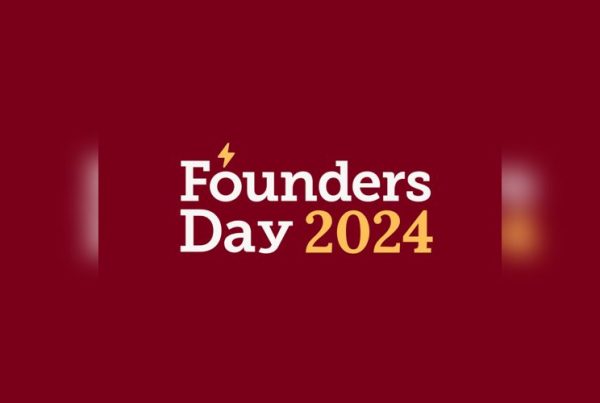The Health Sciences Library and the Wangensteen Historical Library of Biology and Medicine (the Health Sciences Libraries) are known as collaborative partners in the interprofessional Health Sciences Education Center where their expert staff teach evidence-based practice across disciplines, advance the research lifecycle, welcome conversations around the historical ties to present-day practice, and provide spaces and knowledge to promote active and experiential learning.
And while we’ve only been in our new location for just over 2 years, the roots of the Health Sciences Libraries started in 1892. This was the year the Board of Regents provided the Medical Department $2,000 for books.
With the 1924 construction of what was to become Walter Library, many additional private and departmental libraries across campus were co-located to create a collection of 21,000 volumes.
In 1930, a student-led petition called for the co-location of health related collections closer to the medical campus, and in 1940, Dr. Harold Diehl, Dean of the Medical School, began a 20 year project that led to the building of Diehl Hall as the home to the Bio-Medical Library.
Enjoy this photo history that spans the 1892 collections funding from the Board of Regents to our present-day expertise to advance the teaching, learning, research, and practice needs of today’s health professionals.
1960
The collections officially moved into the Bio-Medical Library in Diehl Hall in 1960. The move took place during the winter holidays. Over 145,000 volumes were transferred a half mile distance over the course of 8 working days.
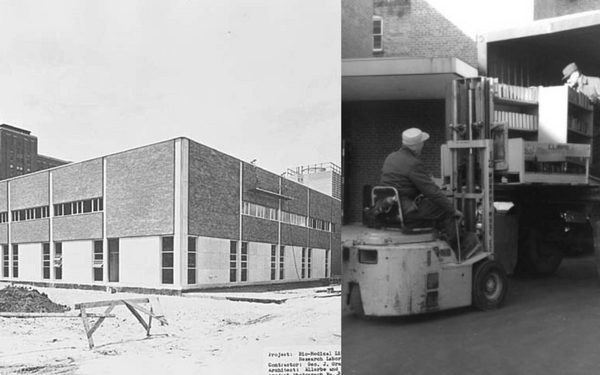
1964
The top 2 floors of Diehl Hall were added in 1964 to house our Wangensteen Historical Library of Biology and Medicine and a sixth floor research facility — realizing the contributions from benefactors Dr. Harold Diehl (left) and Dr. Owen Wangensteen (right).
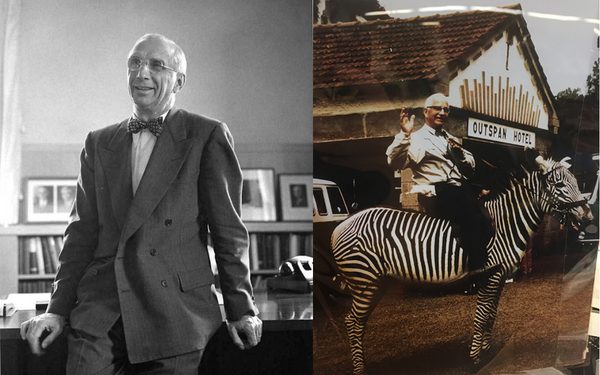
1981
Our work at the Bio-Medical Library continued into the 1980s where our work was largely centered around our collections and our research expertise. Card catalogs were our main access point to our collections.
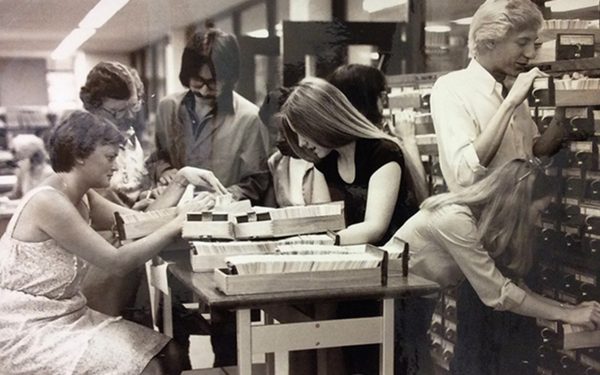
1997
The introduction of the internet and networked computing changed the shape of our work, moving towards the Information Commons model, designed to organize workspace and service delivery around the integrated digital environment.
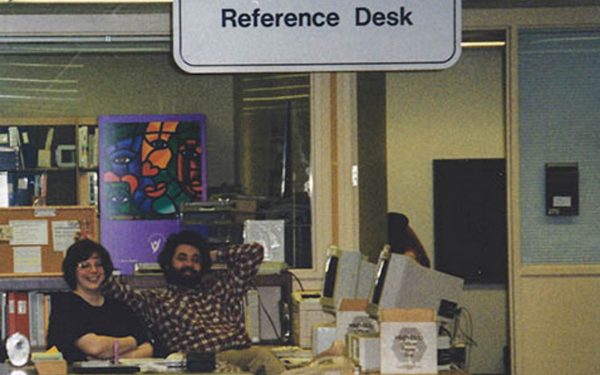
2014
In 2014, the Bio-Medical Library began rethinking their work within their physical location — not around the digital environment, but around space as a service, configured around the research, learning, and social needs of our community.
This rethinking prompted a 2017 refresh of the Bio-Medical Library and the creation of dedicated spaces for collaboration, productivity, service, and study. We also piloted new spaces including a data visualization area, a makerspace with a virtual reality component, and a 1:Button Video Recording Studio.
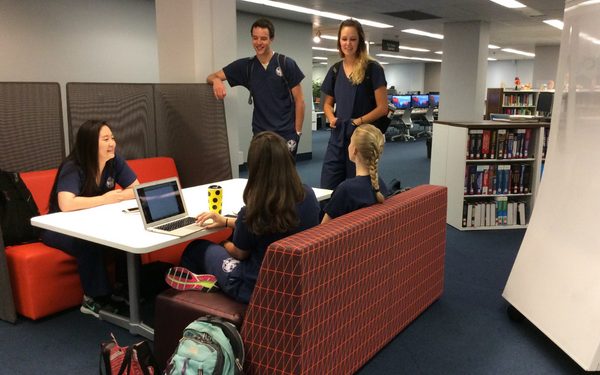
2020
These pilots led the way for our integration into the Health Sciences Education Center, which opened in July 2020 and offered several purpose-built spaces for the Health Sciences Library and Wangensteen Historical Library:
- Service desk and computing area
- Makerspace
- Data + Visualization Lab
- Virtual Reality Studio
- 1:Button Recording Studios
- The Commons – a teaching and learning sandbox
These services are now making way for our “New Model Library” that extends the concept of space as a service to encourage our community to gather in different ways for different purposes.
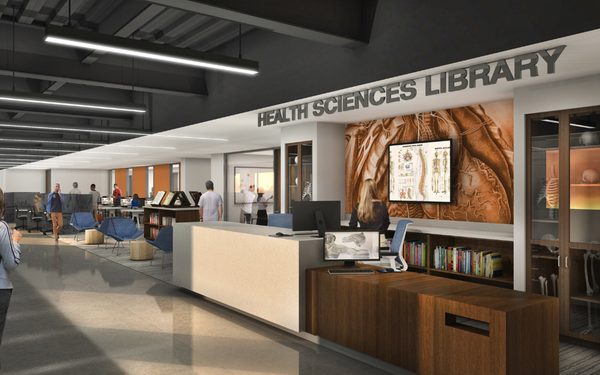
2022
And here’s what this work looks like in action!
Faculty like Dr. Rosalind Chow are helping students practice with less risk through custom tools made in our Makerspace — like this ultrasound probe cover!
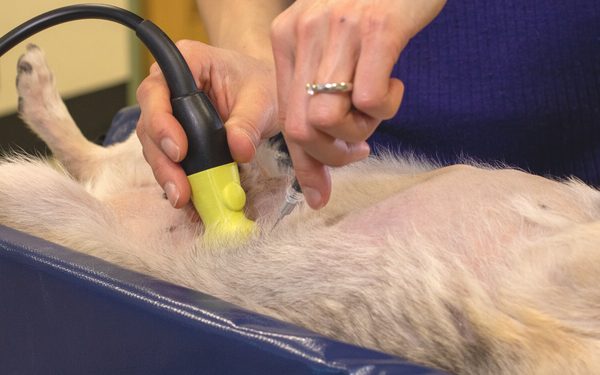
Emergency Medicine students are using Virtual Reality in their training to see how efficiently and accurately they can help pin down the causes of pain or other conditions experienced by virtual patients.
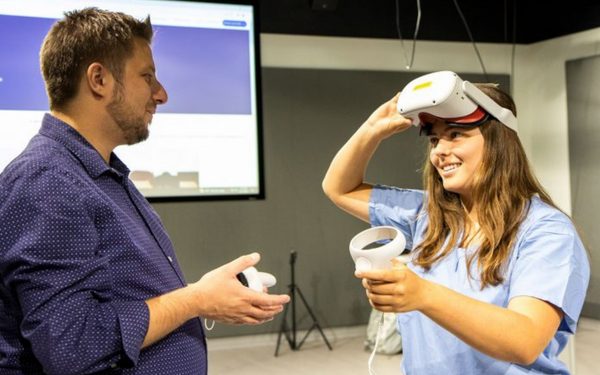
And we are welcoming students in the Bachelor of Arts/Medical Doctor Joint Admission Scholars (BA/MD JAS) Program to interact with materials from the history of health to explore how the past has set a precedent for healthcare — what it should be, what it shouldn’t be, who should practice it, and how we can set a new course for the future.
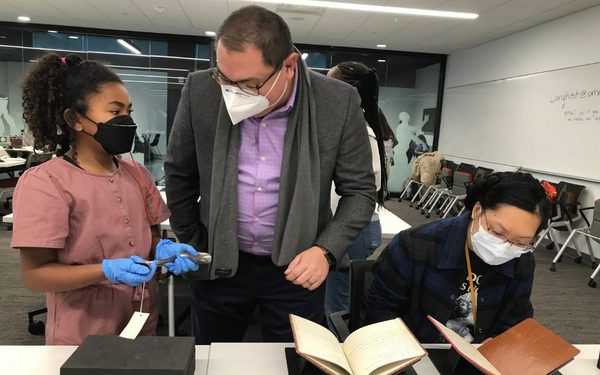
Looking ahead
Much has changed between the original Regents funding in 1892 to the Bio-Medical Library of the 1960s to the Health Sciences Libraries of today, but our goals to advance teaching, learning, research, and practice across and between the health sciences disciplines has remained steady.
What will the next 130 years look like? We look forward to shaping it in partnership with you.


